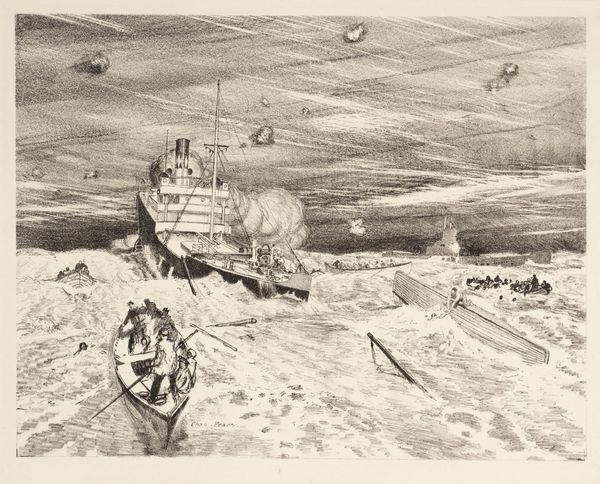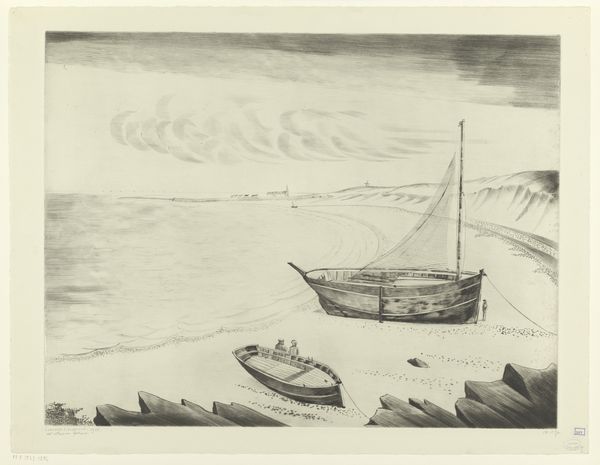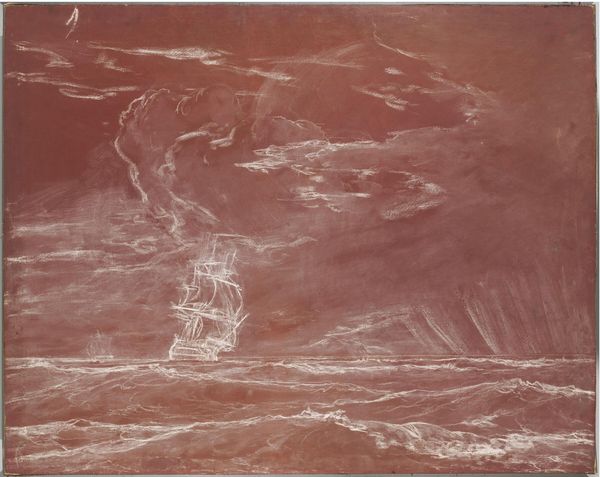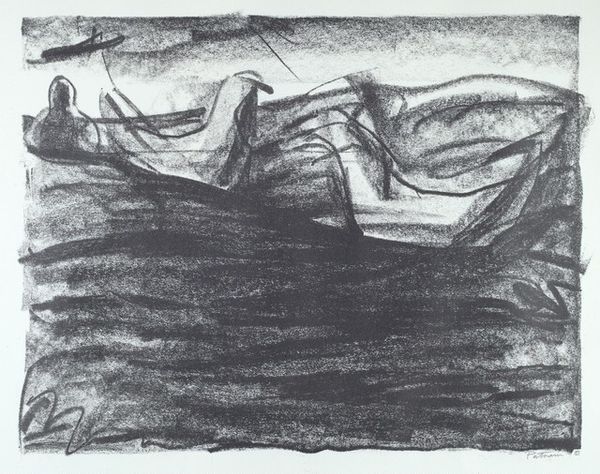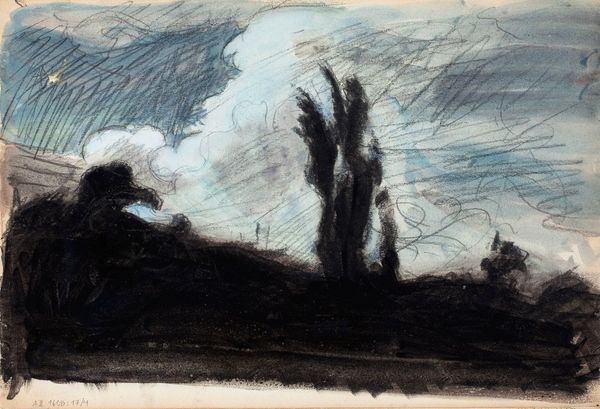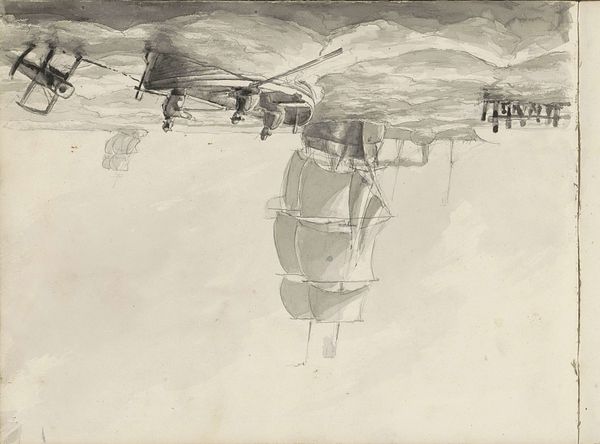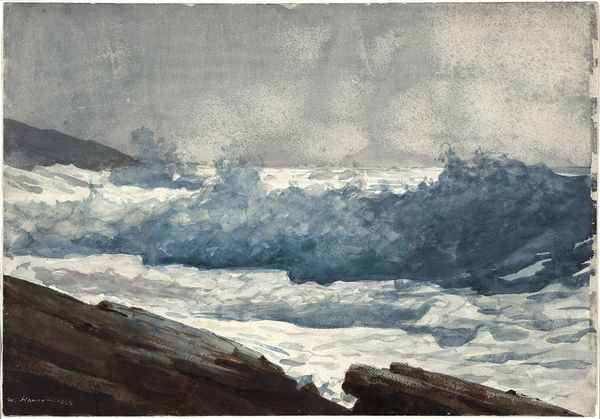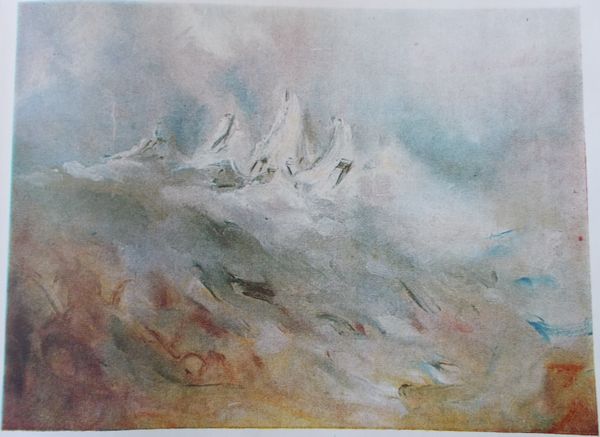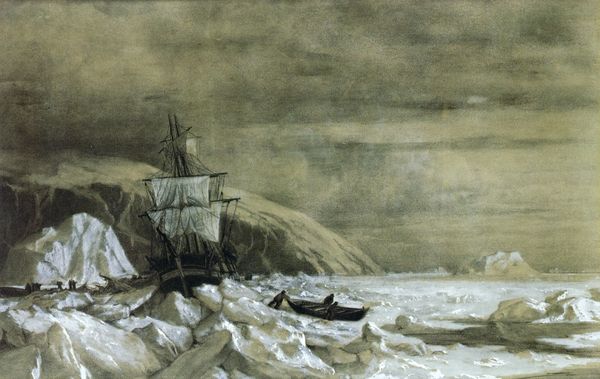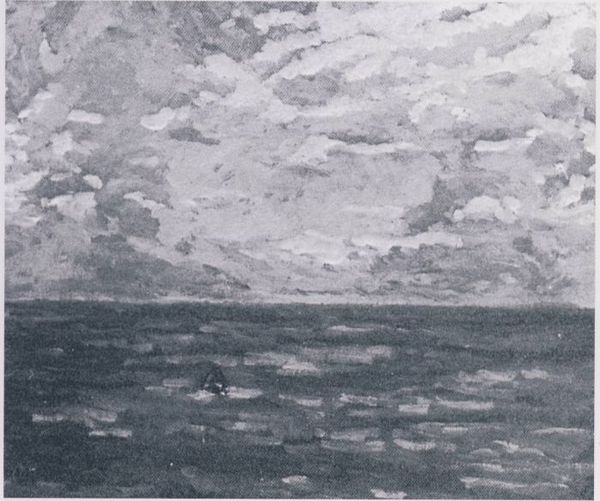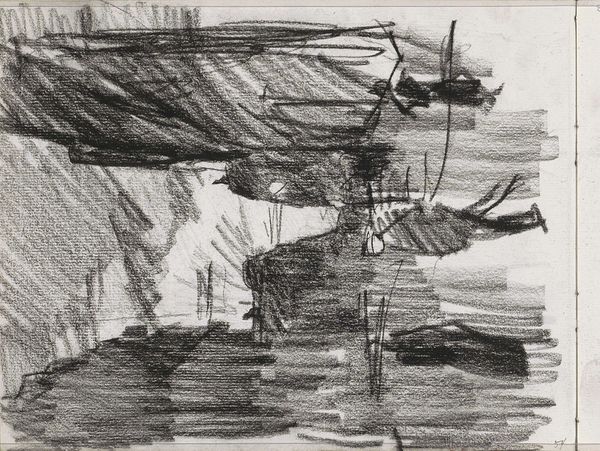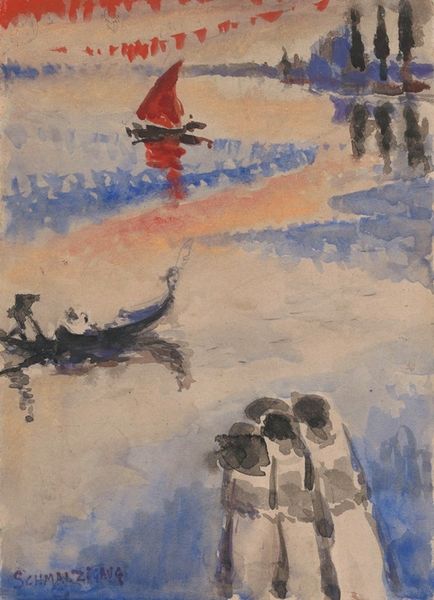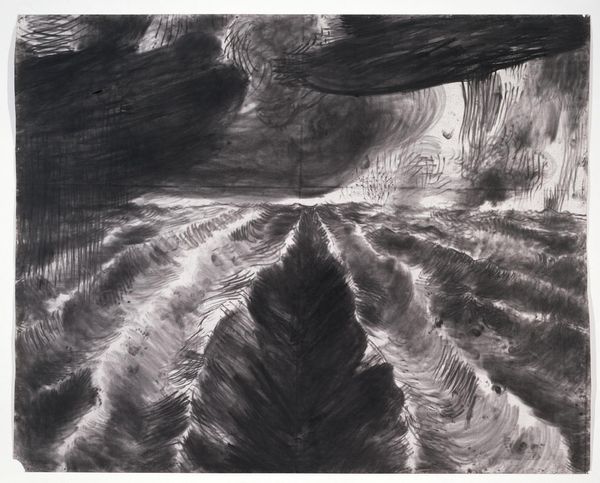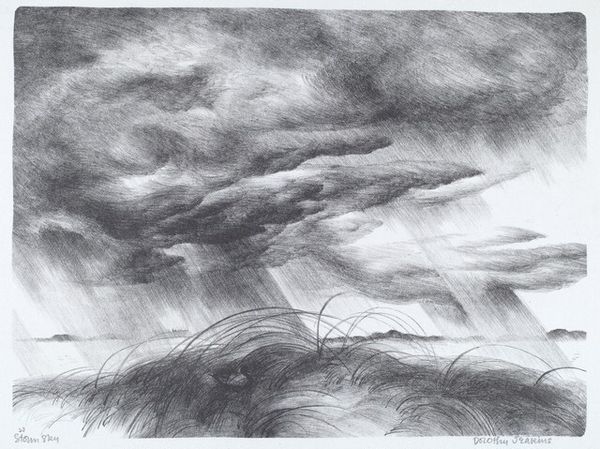
Copyright: Oleg Holosiy,Fair Use
Curator: This is Oleg Holosiy's "North Light," a watercolour from 1992. It immediately evokes a sense of foreboding. Editor: It does indeed. A stark landscape. It makes me think about loneliness and isolation—that faint ship on the horizon almost swallowed by the oppressive sky. Curator: Watercolour is an interesting choice of material to render this image. What does it tell you about the means of production of Holosiy’s work, or perhaps even consumption of art in general? Editor: The way he uses watercolour here is captivating; it bleeds and blends in such a way that softens any clear line and creates an ethereal sense. Those downward drips remind me of tears. Light as knowledge or enlightenment seems to pierce a heavy darkness, the ship representing humanity seeking something on the horizon of an abstract world. Curator: Consider Holosiy's process of dilution, of application and letting the water take hold. Watercolor’s reliance on water transforms not only pigment into the representation of space and place. The support for a medium becomes equally important; a cheap piece of paper may stain and crumble with the aggressive applications Holosiy uses to shape what you consider knowledge in the form of piercing light. Do we know where this watercolour was rendered, and do such locations become consumed and commodified by wealthy art patrons? Editor: He was working in Ukraine at this time. The symbolism might touch on a search for identity during the post-Soviet era. Maybe those of us looking at it bring the historical baggage of such transformations into the present. Is this about a global longing for clarity amidst turmoil? Curator: So then is our shared viewing a symbol itself of collaborative meaning making through art? If the painting fell to bits through poor process or materials, there would be no image to debate. Let’s celebrate art practices of preservation. Editor: And its capacity to evoke the shared symbols of hope, search, and that lonely journey, even across geographical and temporal divides. Curator: A stark and revealing encounter with materials. Thank you for taking that voyage of analysis with me. Editor: Indeed, a truly evocative use of symbolic language!
Comments
No comments
Be the first to comment and join the conversation on the ultimate creative platform.
